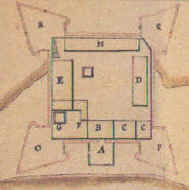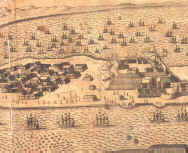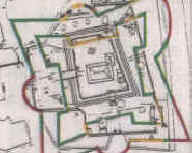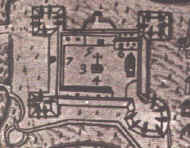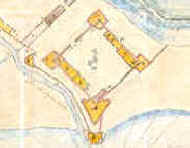|
5. Square Fortresses in Far East |
||
|
1511 |
||
|
Malacca (MALAYSIA) |
||
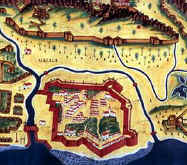 |
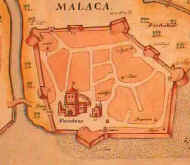 |
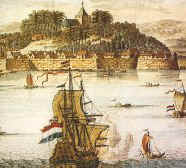 |
|
The original town of Malacca was created into a sultanate extended throughout the lower half of the Malay peninsula. In 1509, the Portuguese arrived and tried first negotiation, but in 1511 they conquered Malacca under the excuse that the Malaccans had attacked their fleet, commanded by Alfonso d' Albuquerque. The Sultan Mahmud fled to Johor, from where he tried to recover his city but it was without success, because the Portuguese started the construction of the massive fortification A Famosa or Porta De Santiago . They settled in during more than a hundred years, a time in which Malacca became a major trading port for Asia. The first and second maps are from 1629 and 1630. In 1641, the Dutch took over after an eight-month siege of the city and a fierce battle. They carried out an extensive rebuilding program. The third map is from Francis Valentijn (1726). Other paintings and maps. |
||
|
1571 |
||
|
Manila (PHILIPPINES) |
||
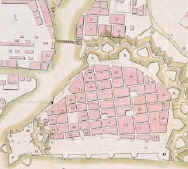 |
||
|
Manila was founded by Legazpi, the first one of the governors of the Philippines, 1571. Nevertheless, Legazpi, prior to Manila, had established in 1565 the triangular fort-bastion San Pedro in Cebu city.The fortifications of the city of Manila went through many projects, which have been shown at the Expo-Manila. Miguel Antonio Gomez made a fortification project in the 19th century, which never was implemented, converting the Santiago fort in a square fortress. |
||
| 1595 | ||
| San Felipe (Cavite, PHILIPPINES) | ||
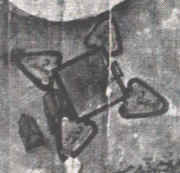 |
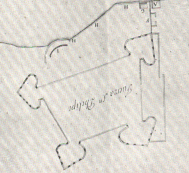 |
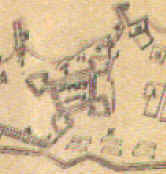 |
|
Lourdes
Trechuelo, Arquitectura Española en
Filipinas, Sevilla 1959. |
||
| 1616 | ||
| San Pedro (Iloilo, PHILIPPINES) | ||
|
Lourdes
Trechuelo, Arquitectura Española en
Filipinas, Sevilla 1959. |
||
|
1619 |
||
|
Batavia (Jakarta, INDONESIA) |
||
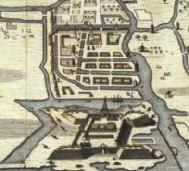 |
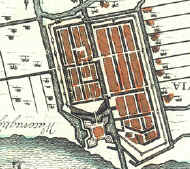 |
 |
|
||
| F. S. Gastra, The Organization of the VOC in Asia. | ||
|
1620 |
||
|
Fort Sao Paulo do Monte (Macao, CHINA) |
||
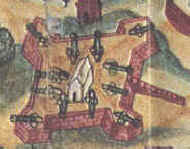 |
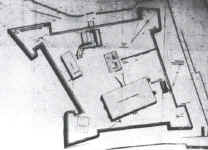 |
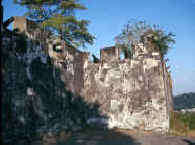 |
|
It is not clear the exact moment in which Portuguese arrived to Macao, but it took several years to start the fortification of the city. This fortress is located in a hill inside the town, and it was the central link in the settlement's protective city walls, and in 1622 was very efficient in putting away the Dutch in their attempt to conquer the city. Currently is hosting a modern museum on the history of Macao. |
||
| Jorge Graça, The fortifications of Macau. | ||
|
1624 |
||
|
Fort Zeelandia (Tayouan, Anping, Tainan, TAIWAN) |
||
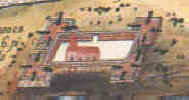 |
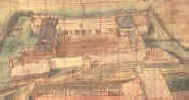 |
 |
|
|
|
|
| Dutch in Taiwan, Koxinga | ||
| 1626 | ||
| Santísima Trinidad (Kelang, She-liao Tao, Hoping Island, Jilong, TAIWAN) | ||
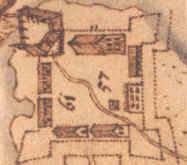 |
 |
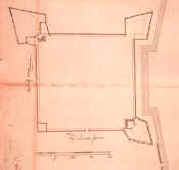 |
|
The fortress Santísima Trinidad in Isla Hermosa (modern Taiwan) was built by the Spaniards to protect their Manila-Fujian trade, which was threatened by the Dutch of Fort Zeelandia. The inner square was 100 m. long and 100 m. wide. The Dutch conquered the fortress in 1642 and occupied it until 1662. They demolished the walls and left the former bastion San Antonio el Grande which they named Noort Holland. The same name was given to the whole fortress (See the first map). The Dutch forces reoccupied the fortress for a second time between 1664 and 1668. In 1666, they rebuilt the walls and reconstructed the bastions, two of them in a half-moon shape (See the second map). The following year after suffering an attack from the Zheng troops, they rebuilt another bastion most probably according to the original shape (See the third map). More. |
||
| José Eugenio Borao, Spaniards in Taiwan, Taipei, vol. I (2001), vol. II (2002). | ||
| 1635 | ||
| Nuestra Señora del Pilar (Zamboanga, PHILIPPINES) | ||
|
The Spaniards arrived for the first time to Zamboanga in 1598. But, only in March 1633, the Governor General Juan Cerezo de Salamanca sent Juan de Chaves to establish this fortress in the South of Mindanao to give protection to the Jesuit missions. The plan of the fortress was made by the Jesuit Melchor de Vera, and construction began on 23 June 1635. Next Governor General, Sebastian Hurtado de Corcuera, regretted the construction of this fort, but later gave his support. In 1662, when Philippines received the threat of Koxinga, all the strength was concentrated in Manila, and the fortress was abandoned. in 1672, the Spanish government issued a decree for the reestablishment of the fortress but the lack of resources delayed this action. Only in 1718 the fortress was rebuilt and reoccupied. The name of the fortress was San José, but now received the name of Nuestra Señora del Pilar de Zaragoza, and the four bastions were named after San Felipe, San Fernando, San Luis and San Francisco Javier. The second map is from 1738. |
||
| Lourdes
Trechuelo, Arquitectura Española en
Filipinas, Sevilla 1959. René B. Javellana, Fortress of Empire, Manila, 1997. Spanish fortifications in the Philippines |
||
|
1637 |
||
|
Ternate (INDONESIA) |
||
